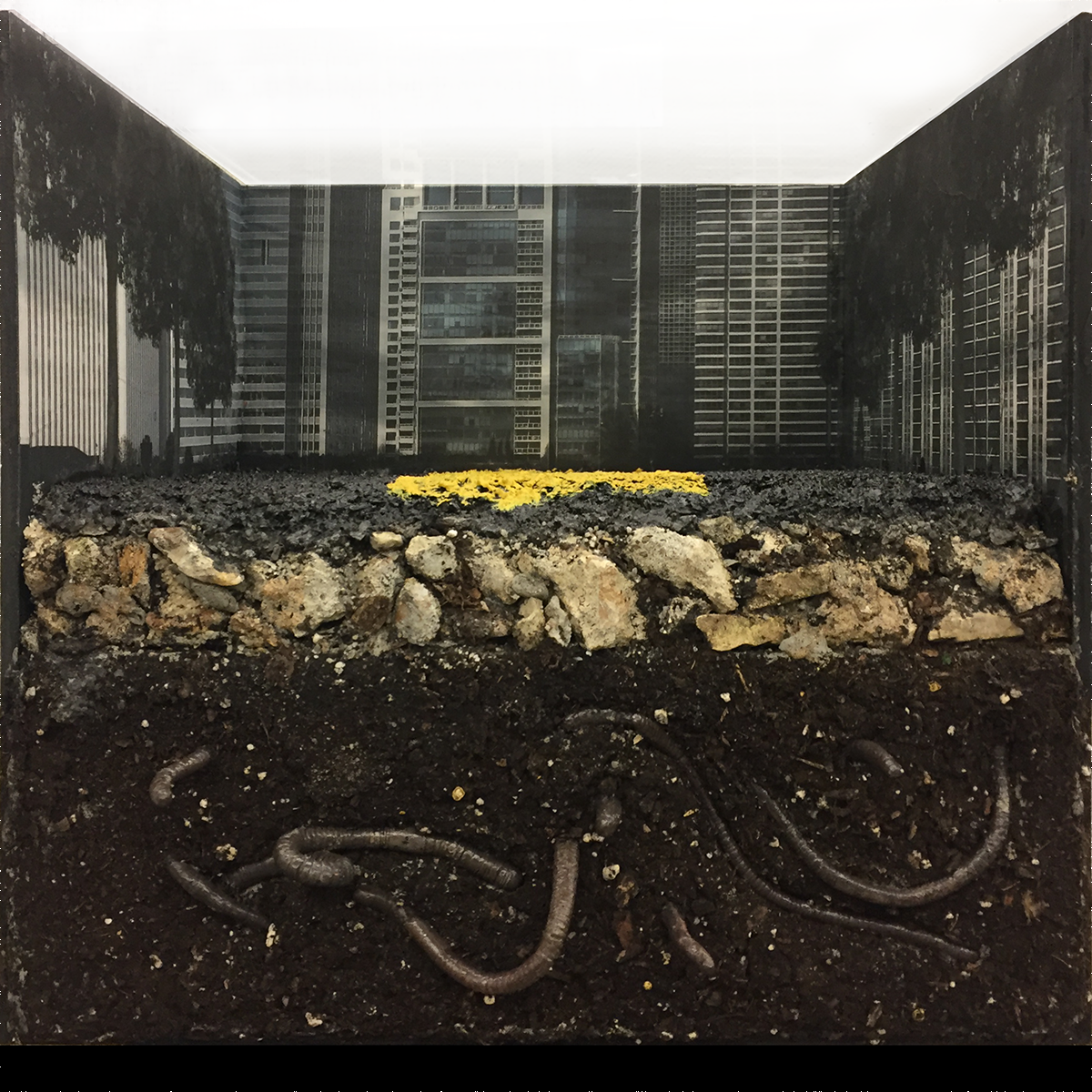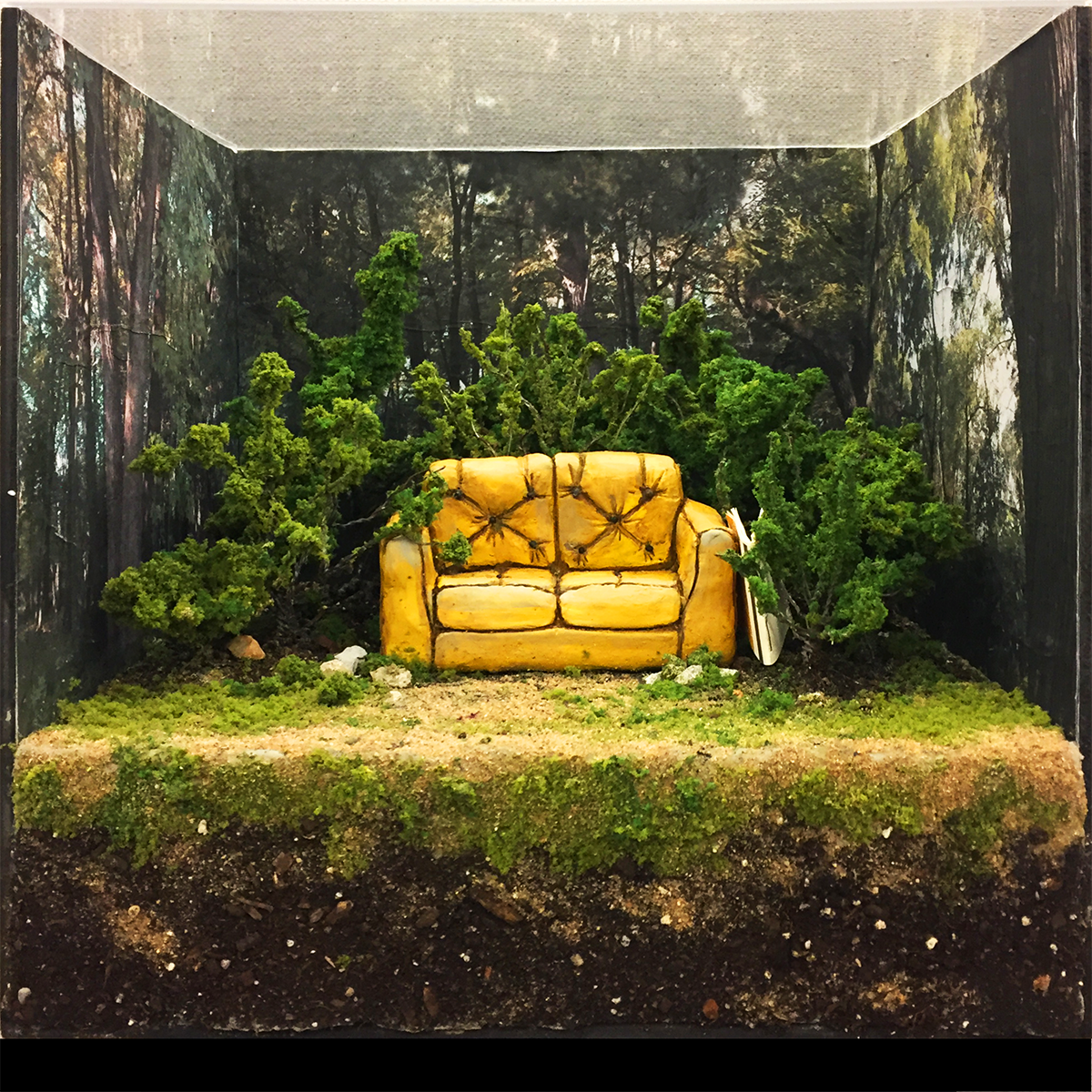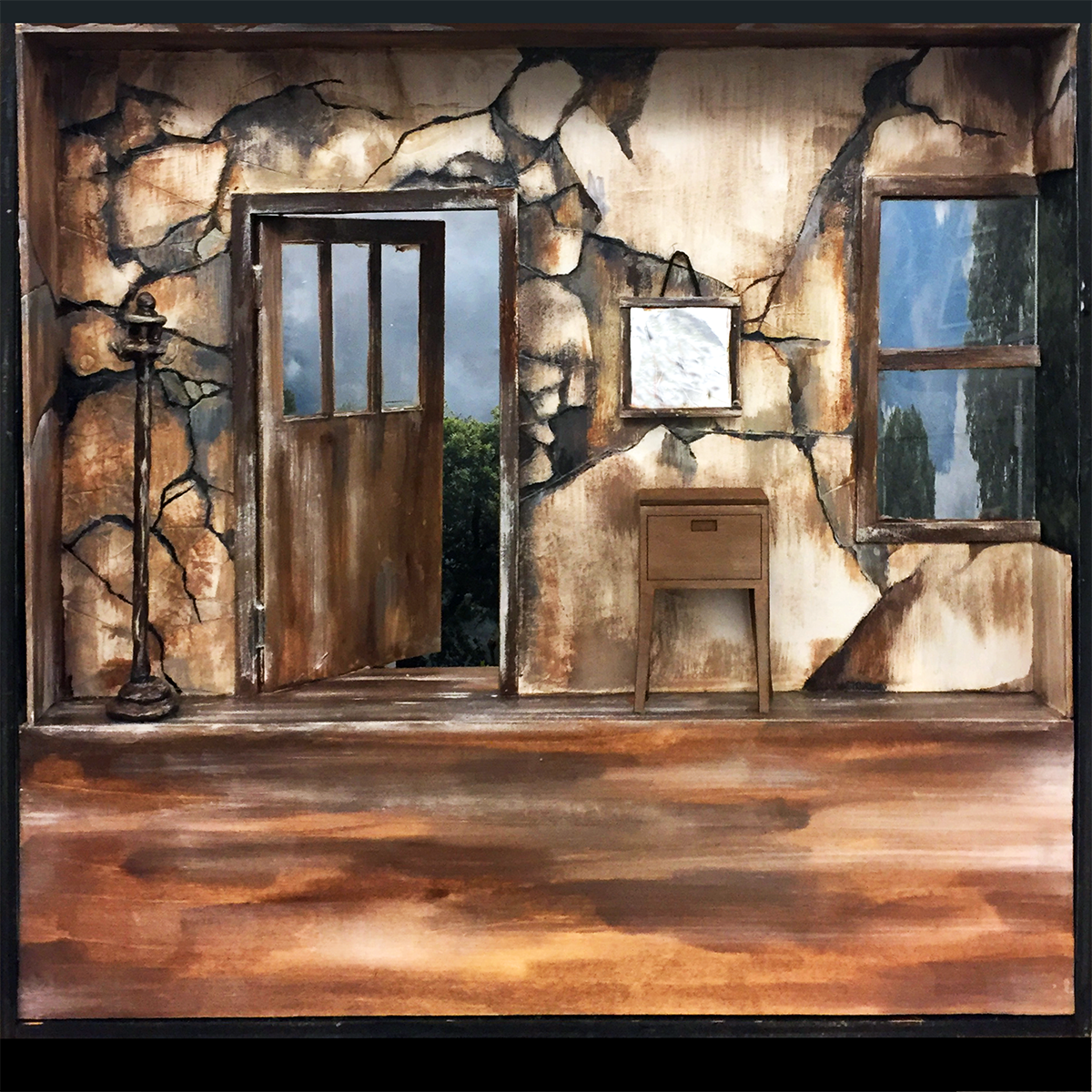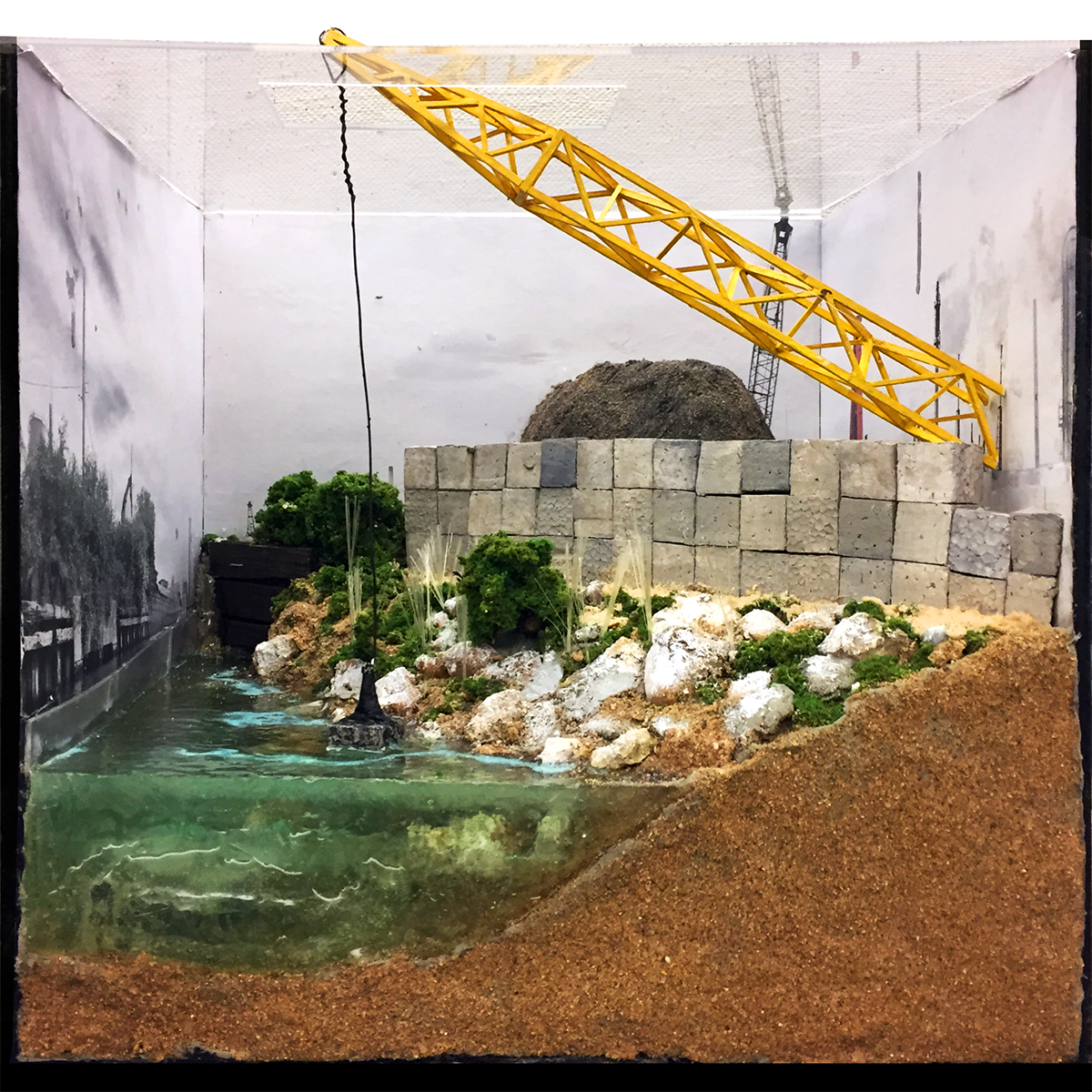The Greater Chain of Being A Contested Terrain
Margot Shafran and Shuying Wu | Washington University in St. Louis | Graduate School of Architecture and Urban Design
LAND 501 | Landscape Architecture Design Studio III | Jesse Vogler + Micah Stanek | Fall 201
The worlds we make and the landscapes we project are intimately tied to broader systems of belief and value. What is perhaps somewhat sobering, however, is the fact that this is true even, and specifically, if we do not make these belief systems an active part of our ideation. This project is an attempt to look directly at these structures of belief, as we bring into question some of the more abiding models and metaphors that have structured our relationship to the natural world.
Through time, societies’ understanding of the human position a world of other entities changes. At some points, the world chain of power has transformed from a hierarchical order into a dispersed system of competing subjectivities. The structure of a society has a direct effect on the spatialization of the landscape. Our dispersed system of competing subjectivities offers an opportunity to shift priorities from one of capital and political control toward environmental and social well-being; an active re-wiring of currently disengaged entities is both necessary and possible. As agents of space-making, landscape architects ought to work to reconcile these disparate subjectivities.
This is a framework for how.
Travel
to develop an understanding of the cultural, economic, political, and ecological landscape that together make up the context of a focus area.
Road Trip
from St. Louis to Chicago following the Mississippi River to the Missouri River, then through Grafton, Illinois up along the Illinois River to the Chicago Sanitary and Shipping Canal.
Externalities
the unintentional ecological consequence inevitable with every man-made structure. These are the conditions that spurred the following research.
In this time, through these places, we witness and identify existing territorial rules, cultural practices and landscape technologies.
Through observation, the extent of external ecological consequences that result from every man-made system became evident. For example, we observed the Blue Gull using aeration chambers at Stickney Water Reclamation as habitat, the death of urban mammals lying on the side of the highways. We have a term for this externality: roadkill. We identified the earthworm struggling to survive in salt saturated soils. We acknowledge the possibility for vegetative species to spread via barges down the riverway. These moments and situations of identified externalities allowed us to examine how species survive in their human sculpted surroundings. Further, we must then question how we can position the role of landscape architect in the shaping of these new spatial and environmental conditions such that these external consequences are acknowledged and anticipated. In doing so, we can critically reposition landscape beyond the picturesque visual treatment into the realm of multi-layered functioning practice. Could we use our expertise as spatial choreographers to provide a better living condition for both non-humans and human?
Over time, societies’ understanding of the human position in the world changes, transferring the chain of power from a hierarchical order into a dispersed system of competing subjectivities. The structure of a society has a direct effect on the spatialization of the landscape. The Great Chain of Being, a hierarchical structure of all matter and life as depicted in the Diego de Valades in 1579, indicates a belief that humans, and every other being and matter have a strict position in the order of the world. By the19th Century in Chicago, the chain of being had shifted. Practice of industrialization and urbanization indicate that humans have the capability and prerogative to manipulate all other beings and matter; the human species was at the top of the hierarchal diagram. A Contemporary Chain of Being that displays the Chain of Chicago is a chain of power with layers that interact with one another and can move throughout the system. Our proposed version, the Greater Chain of Being, reveals the city of Chicago as a dispersed power system, which has a reversed structure in comparison with the Contemporary version. This structure, with linkages about resources, power, and forces, renders a city more stable. The prioritized entities (such as the elites in the center before) are now in service to earlier marginalized entities – nature, space, and matter.
To further understand the existing structure of matter and life within the spatial context of Chicago and the territorial control over its waterway, we worked through mapping the chain of power and energy of competing characters - organizations, institutions and environmental conditions. The complex knots of these relationships indicated a functional network of ecologies, economics, cultures, politics, and infrastructures. Overall, the system is hierarchical such that natural systems and spatialization of society are at the mercy of the other agents and subjectivities. However, the significance of competing subjectivities has the ability to move throughout the system. Therefore, we can understand the system as stable, but malleable – the prioritized entities can be manipulated. With this understanding, we propose that the chain of being diagram can be hacked, or re-wired to prioritize the previously marginalized entities.
In an effort to shift priorities from one of capital and political control toward environmental and social wellbeing, an active re-wiring of currently disengaged entities is both necessary and possible. As agents of space making, landscape architects ought to work to reconcile these disparate subjectivities.
Based on the Greater Chain of Being, we randomly selected one marginalized and one prioritized component of the Greater Chain of Being and tried to discover three possible relationships between them. This was done by looking at existing relationships but also speculating on other possible relationship. The guiding principal for these new relationship propositions was to find a way to advantage a previously marginalized entity or condition to render it a priority.
We selected five sites along I & M canal as places for re-wire interventions. They follow below.
This investigation is an effort to describe an alternative way that architectural ideas are produced and disseminated. The world, although dominated by human interests, is dependent on natural processes and phenomena. These processes and phenomena are marginalized and deemed indifferent o many contemporary urban lives.
How can we, as architects, address this disconnect in our field, as well as communicating this disconnect to clients and users and guide them with a clear strategic approach towards a Greater Chain of Being? we could bring them to the front stage, expose the problems to architects in our field, and guide them with clear strategic approaches are of great importance.
It is impossible for us to articulate all possible relationships and connections between subjectivities, however, using this framework we hope any possible relationships can be understood and re-understood. It is the responsibility of designers to use the knowledge and ability of our professions to learn, to test, to propose, and to alter the world such that the significance of natural processes and phenomena are not undermined by human entitlement. We can work to bridge the disconnect such that the human place in the world considers its role in constructing positive re-wired conditions instead of unanticipated external consequences.








